Wednesday, 9 September 2009
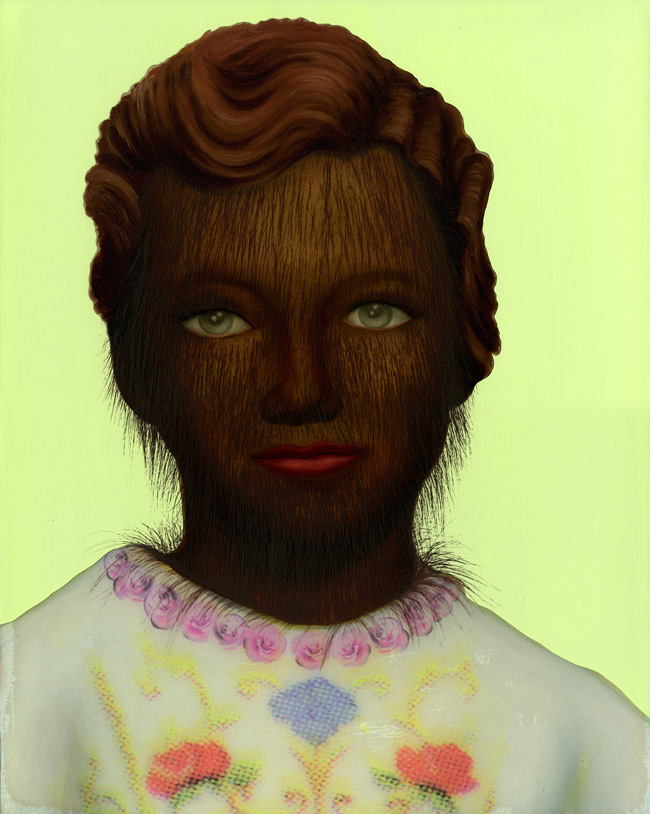
I have always wondered how the brothers Gabriel and Victor Gomez, or The Wolf Boys, with their hypertrichosis syndrome, got on with school. Equipped with neither consideration nor compassion, most children can be very cruel, with their sharp tongues and stinging words. How did the brothers’ react to the jeers of their peers? What did they feel? Outward contempt? Self-hatred? S elf-pity? This was the first thought that came to mind that I stumbled across Erik Mark Sandberg’s work.
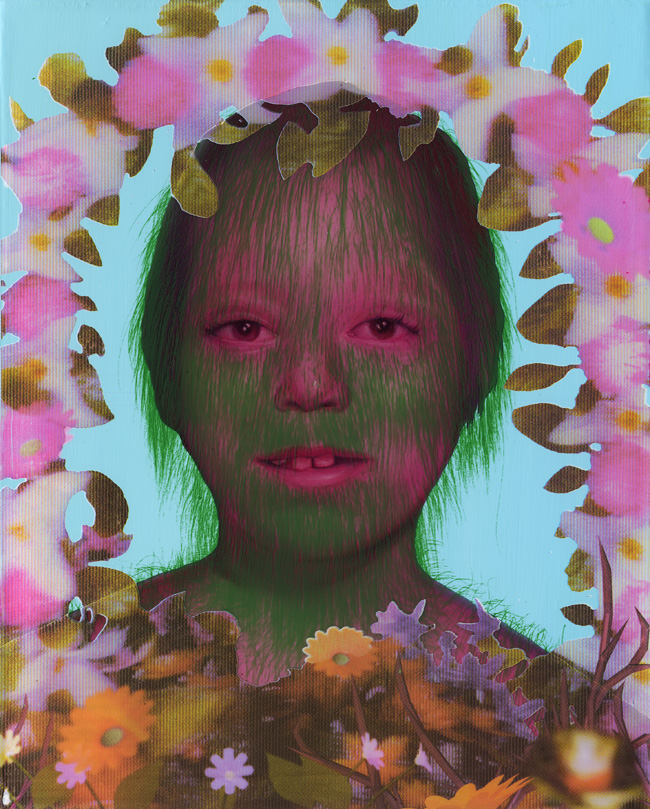
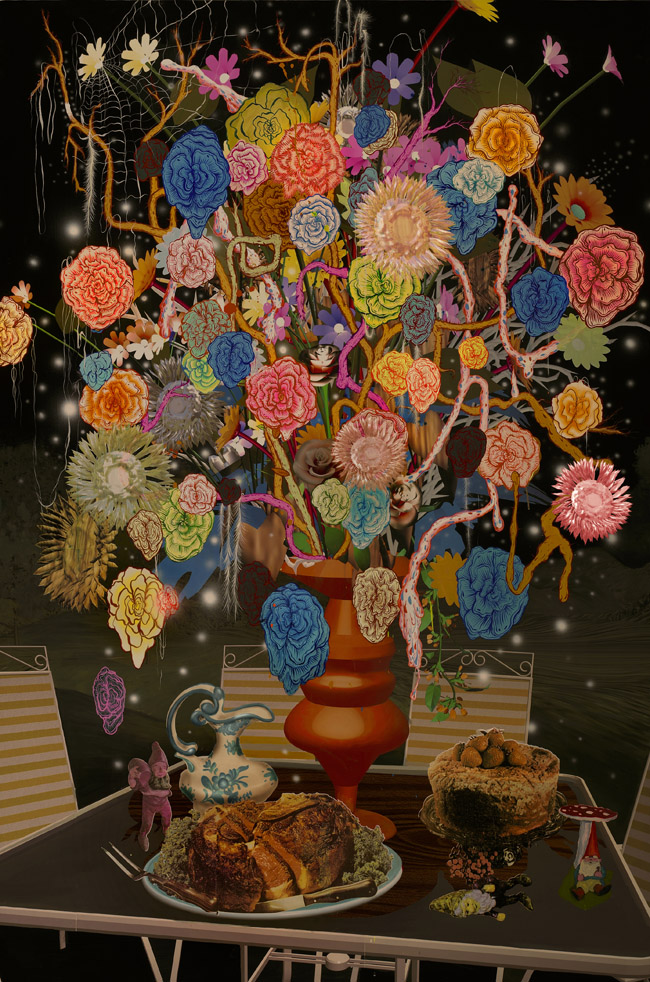
“[My work] usually starts with… an idea I find interesting. Whether it’s a story in the news, some dysfunctional family I see walking through Kmart, a picture… things that stick out to me in observations of daily life. I focus a lot on the balance of “glamour”… the by-products of materialism, idolatry, promiscuous behaviour, genetic modification, pharmaceutical addictions… [and commenting] on what’s currently going on, what’s of the now… and pointing out contradictions. My work helps me gain a greater understanding of my own ideals and responsibilities with technological advancements in society.”
“The complex construction of a piece is often dictated by the conceptual underpinnings of the image or series. I work extensively with materials and components, such as: 3D polygon models, airbrush, oil, acrylic, alternative photo processes, glitter, resins, found photos… There is a constant push/pull, with layers upon layers of beauty and absurdity trying to find the balance with each other. It’s kind of like a math experiment. I’m playing with mixing a cocktail of material use value within the construction.”
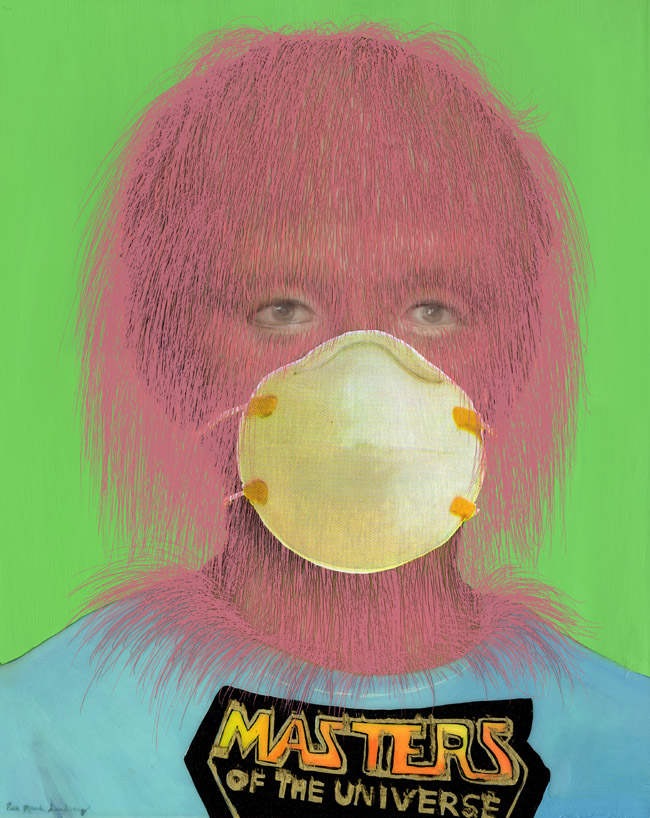
Artwork and text generously permitted to be republished on this blog by the artist himself. Please visit his website to view more of his stunning work.
Tags: Art, Painting
Posted in Uncategorized | No Comments »
Tuesday, 8 September 2009
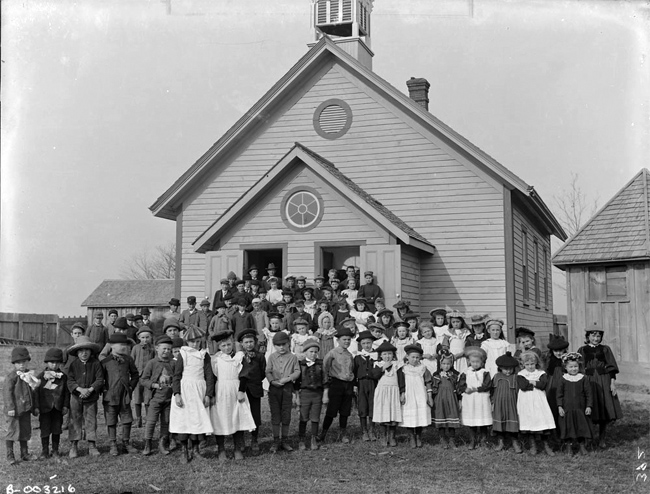
The last time I stepped onto school grounds with the intention of attending a class was in 2004. Today, as I passed by throngs of youngsters making their way to school - some gleefully, some glumly - I was reminded of that thrill I experienced without fail every semester - that earnest desire to do better academically, that semiannual promise I gave my parents to score more aces, that grumpy Biology teacher I always seemed to be stuck with, that obsessive desire to keep my erasers as white as possible and my pencils as sharp as possible… Ah memories…
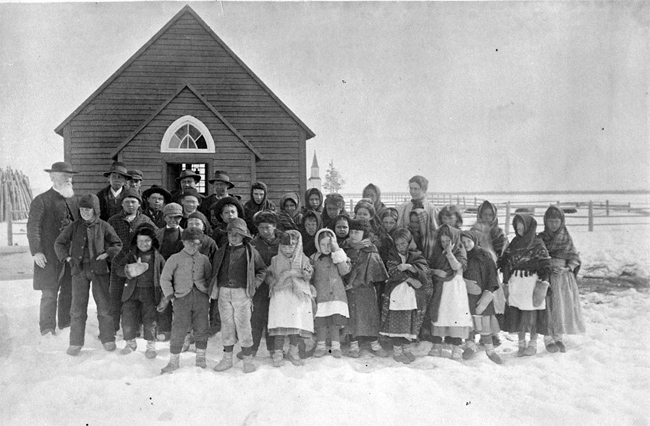

“In the early 19th century, publicly funded grammar schools and common schools were becoming more widespread [in Canada]. Grammar schools, although partially supported by public funds, were intended for the children of elite society, or for the very intelligent. In later years, grammar schools became what we now call high schools… Common schools were created when it was realized that grammar schools could not educate everyone. Common schools were more like today’s elementary schools. In the early 19th century, government acts were created for the establishment of common schools (New Brunswick in 1802, Ontario in 1816, and Prince Edward Island in 1825). Still, schools could only be built when there were enough children in a community and when the local taxpayers agreed to pay their share of the cost.”
“Students often covered long distances either on foot or horse to get to school. They carried their lunches in commonplace containers such as syrup pails, tobacco tins, and jam cans. Classroom discipline was much stricter than it is now. Students who misbehaved were… ridiculed, called names, hit with thrown objects, or struck with a rod (tree branch) or leather strap. Some students were made to stand with heavy logs in their arms for long periods of time, or instructed to lean over to touch their nose to a circle drawn on the blackboard.”
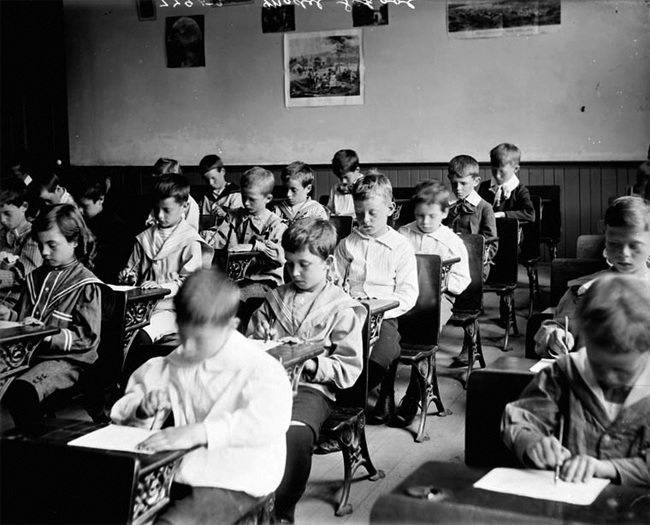
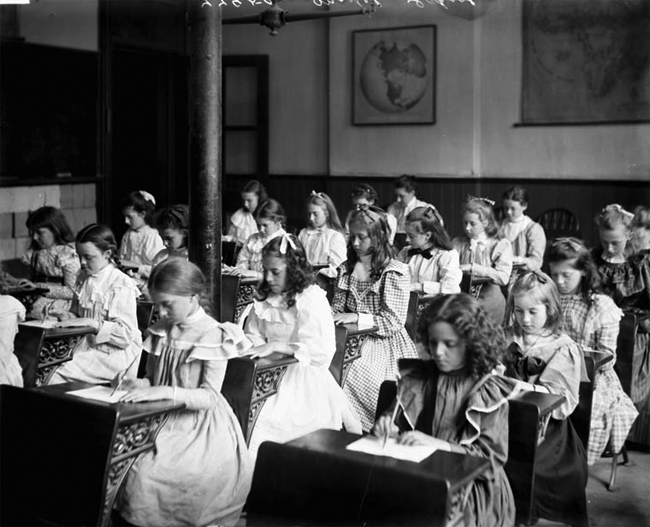
“The one-room schoolhouse was often a source of pride for the community who had built it. It was also the centre of community activities, meetings, dances, and social gatherings. The early schoolhouses, built with either wood, stone or brick, were often poorly heated and ventilated. Good lighting was also a problem. Some schools had very little in the way of equipment, such as blackboards, maps, globes and textbooks. With time, the government passed school acts to ensure the improvement of school accommodation for all students… Schools, teachers and students were evaluated by an inspector on his annual visit. Inspectors reported on the school’s attendance record, the teacher’s teaching skills and the condition of the schoolhouse, including recommendations for improvements.”
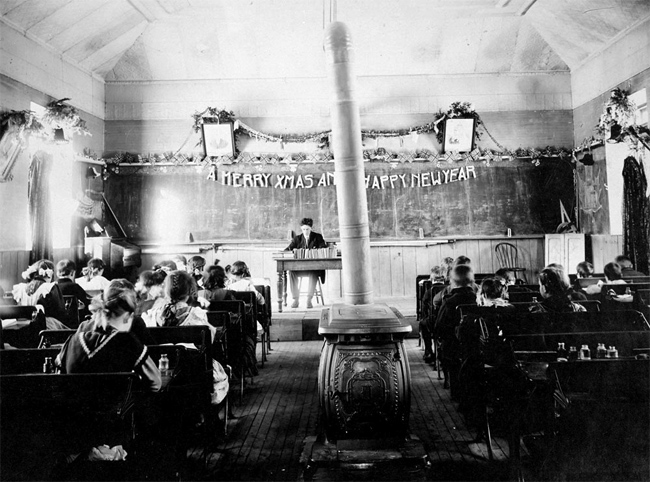
Text and images sourced from Library and Archives Canada.
Tags: Canada, History
Posted in Uncategorized | No Comments »
Monday, 7 September 2009
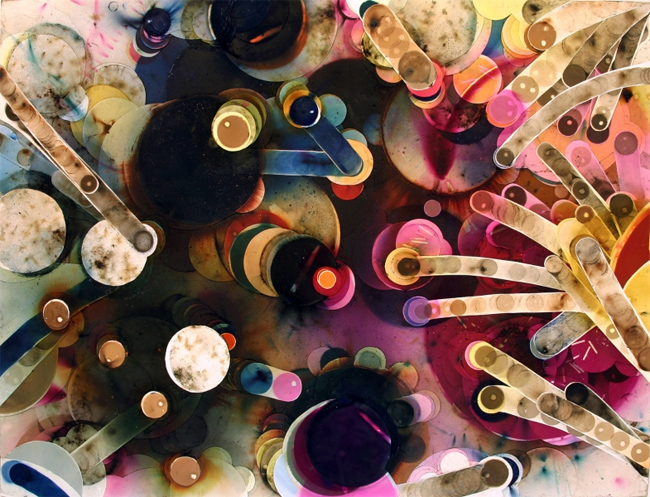
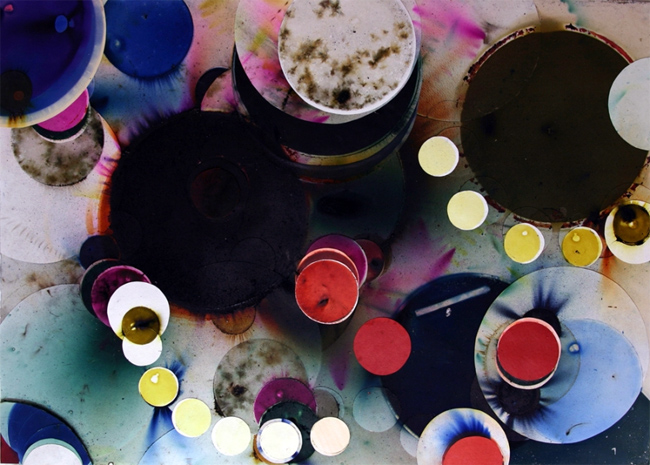
Recently, I have been wondering about the control I have in my life. I like to think that I have complete control in my life - in my actions and my undertakings, but since life revolves largely, if not entirely, around cause and effect, can I truly say my actions are not mere reactions? To what extent do I control my life? And to what extent does the force of randomness and chaos rule it? This is the very notion that spoke out to me when I stumbled across Rosemarie’s work and read her artist’s statement.
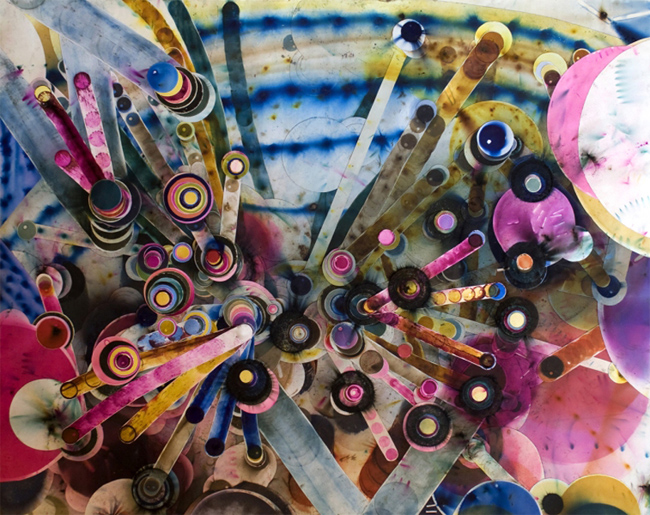
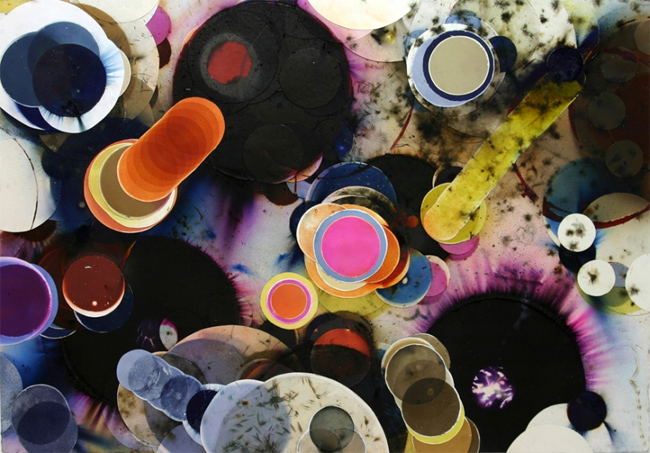
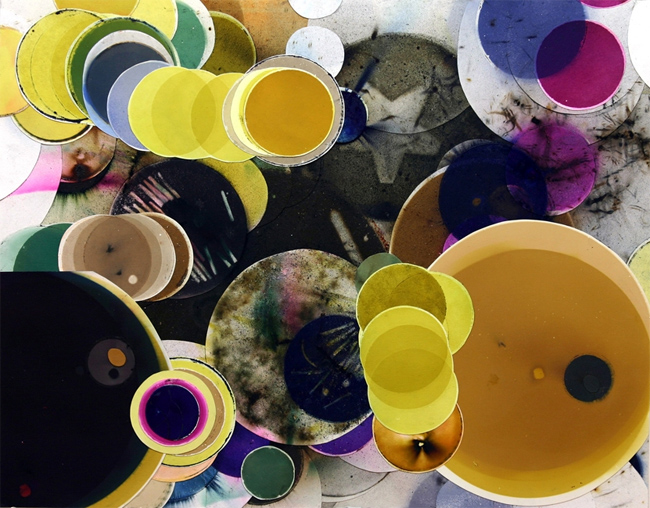
“My drawings are created by containing and controlling firework explosions. I bomb blank sheets of paper with different fireworks including color smoke bombs, jumping jacks, monster balls, fountains, magic whips, spinning carnations, ground blooms, rings of fire, and lasers. As I work, I create imagery by controlling the chaotic nature of the explosions in upside-down containers. When the paper becomes saturated in color, dark and burned, I take it back to my studio and collage blank paper circles onto the image to establish new planes and open up the composition. I then continue to bomb the pieces. These actions are repeated a number of times. The final works contain many layers of collaged explosions and are thick and heavy.
I consider my firework drawings invented dimensional spaces in which the forces of chaos and control combat. The visible traces of the fireworks’ detonations, transform the explosion spectacle into fixed mini universes of streaks, shooting sprays of vibrant pigments and shimmering fields of color.”

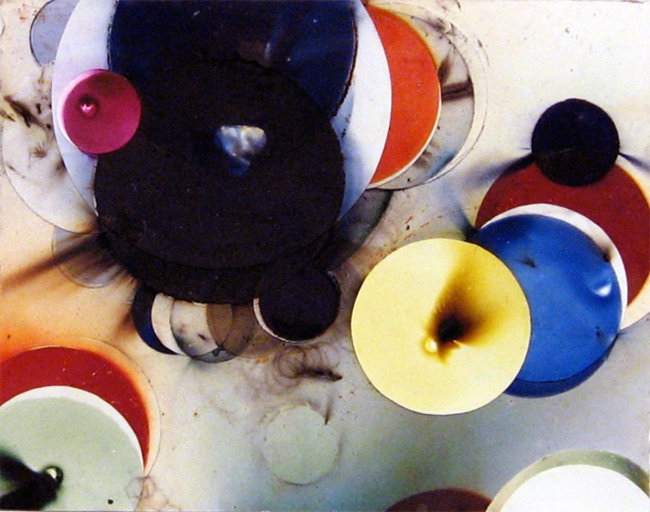
Artist’s Statement sourced from Priska C. Juschka. Visit Rosemarie Fiore’s website to see more of her beautiful work.
Tags: Art
Posted in Uncategorized | 8 Comments »
Saturday, 5 September 2009
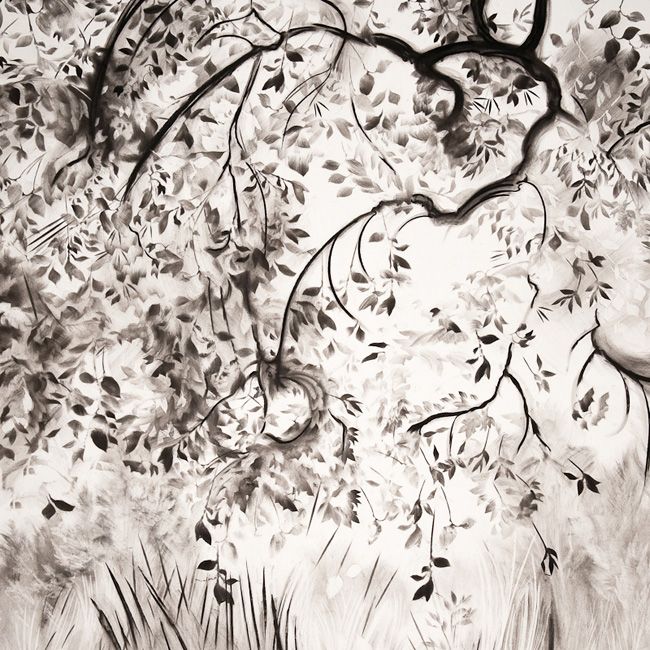
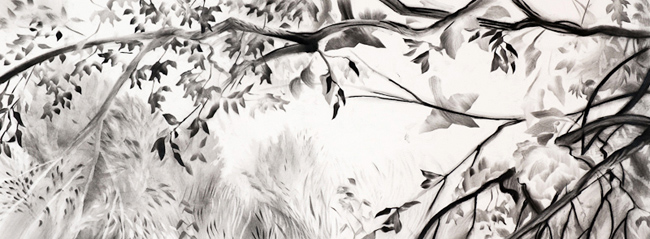
“[My work] unfurls across the panel, revealing a narrative like the story in a novel. It is most often a personal narrative, autobiographical in content that informs and is found in the finished work… The landscapes become maps or barometers of feeling, internalised responses, psychologically defined spaces while simultaneously being reflections on perception, light and form. Looking back over the last 15 years, one can literally trace the path of my peripatetic life in my art. I drive, as we all do, some roads far more frequently than others and the land that borders the trans Canada in Alberta or Highway 7 in Ontario or the route from St. John’s to Conception Bay in Newfoundland have all been primary sources for my landscapes, … [recording] a sense of movement or passage through space. It is the space of memory, recollection and autobiography while being [a particular space].”
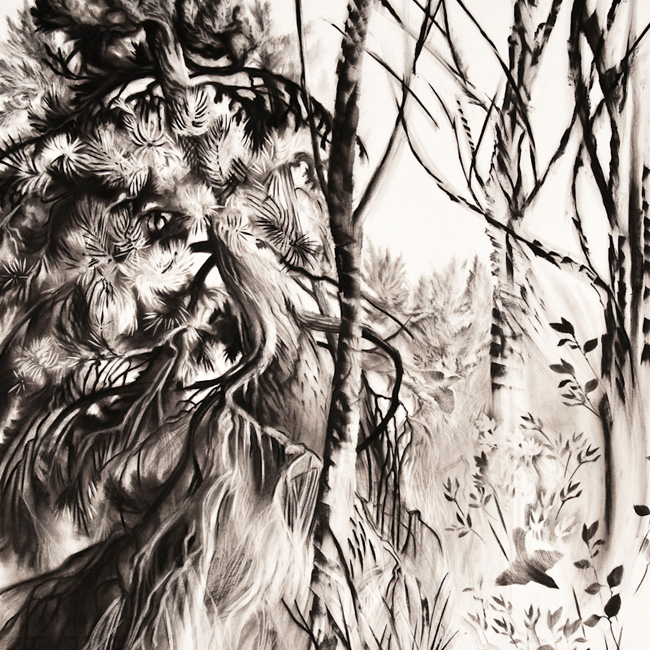


Text sourced from Jennifer Kostuik.
Tags: Canada, Sketching
Posted in Uncategorized | No Comments »
Friday, 4 September 2009

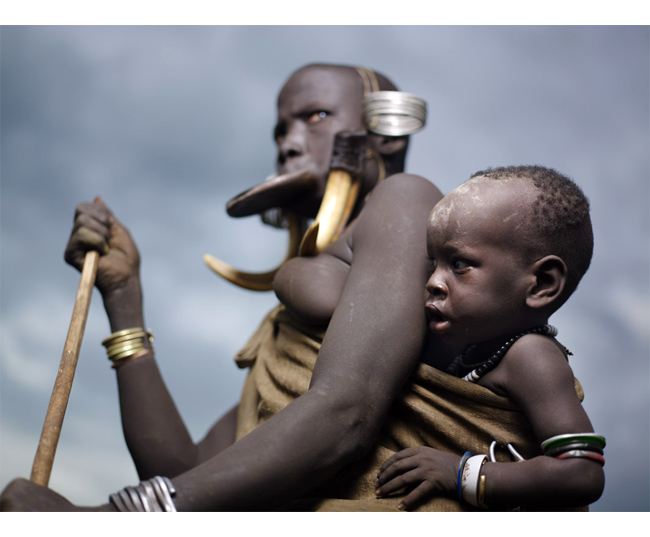
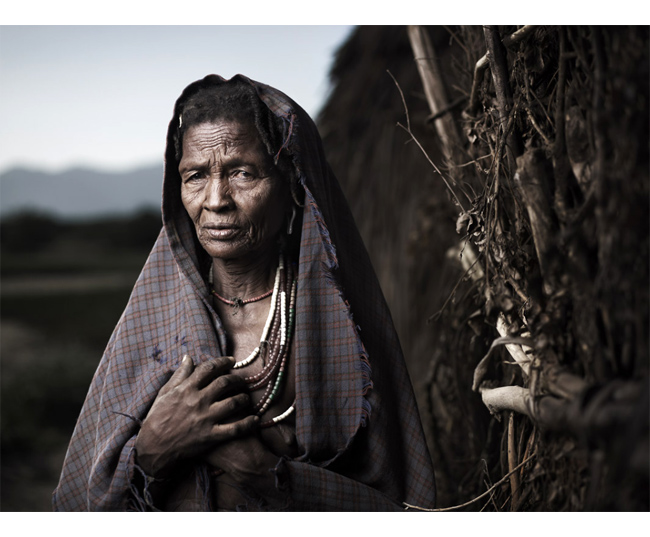
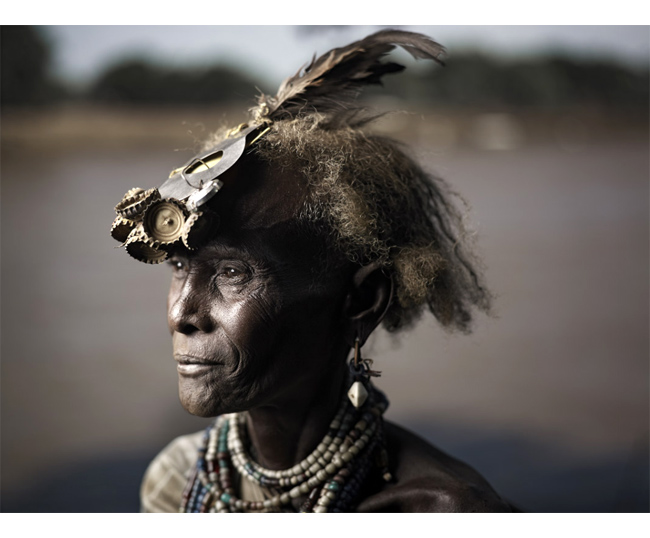
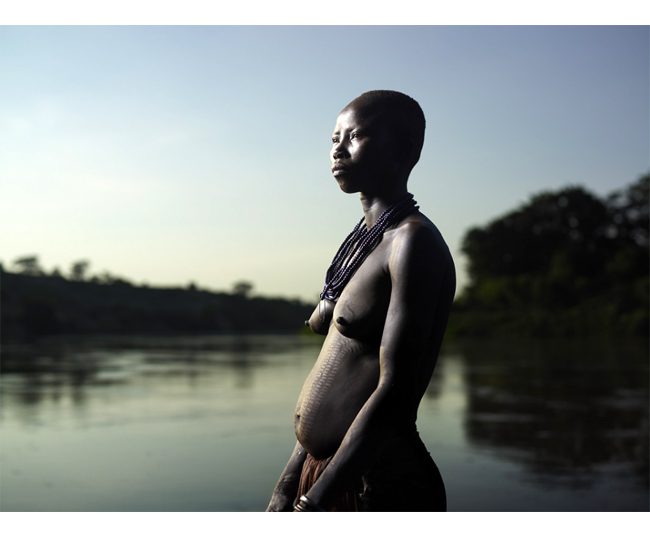
I have never been to Ethiopia, and, before today, I never wanted to go at all. All that changed when I stumbled across Joey Lawrence’s Abyssinia series. Much has been covered of the nation in the media; the lingering image in my head is that of the 1985 famine: starving children with bloated stomachs and bony limbs, gaunt faces further made more harrowing with glazed blank eyes, emaciated cattle straying helplessly in search of food, parched land streaked with cracks and void of moisture. It looked to be a place I did not want to visit - ever! Yet, when I see these images, I become deeply fascinated - what life is and means for these people: simple, albeit tough. I very much doubt my ability to ever live like that - robbed of my precious digital technology and unabated addiction for constant connectivity and news - but it is a pictures like these that remind me what life probably was for my ancestors…
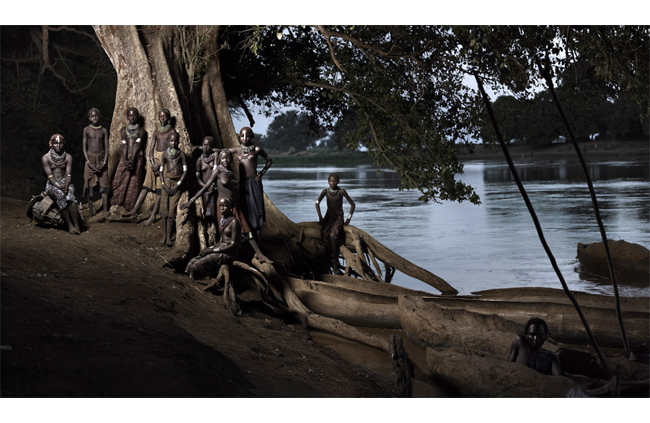
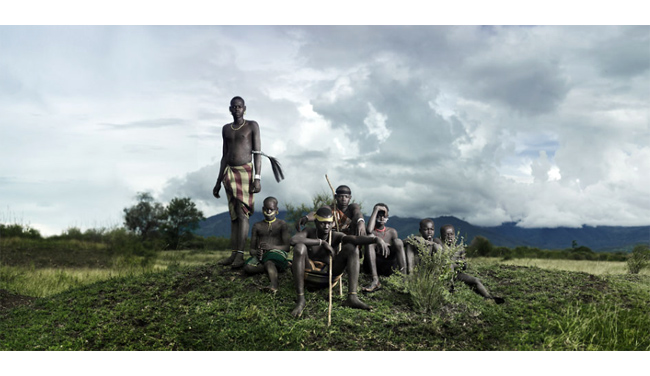
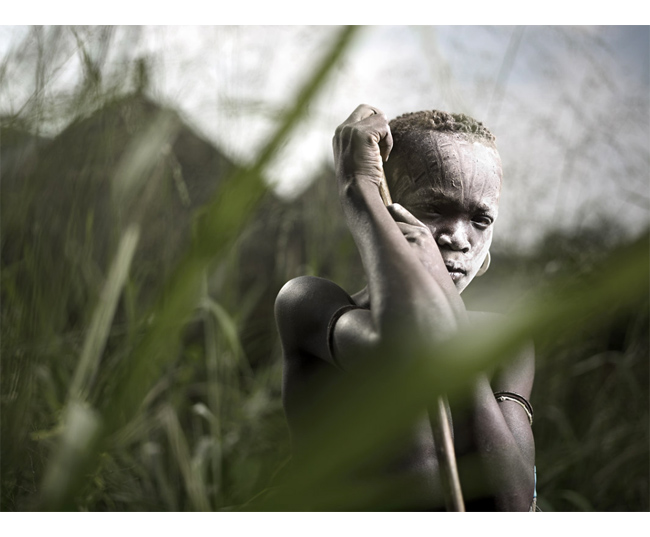
Tags: Africa, Photography
Posted in Uncategorized | No Comments »
Thursday, 3 September 2009
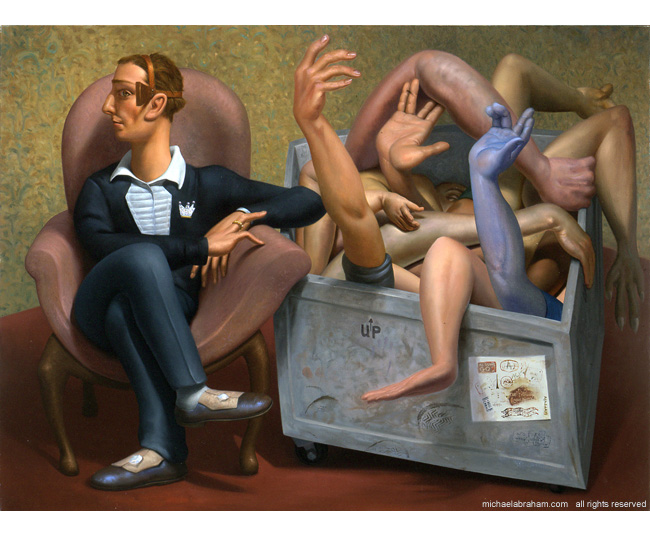
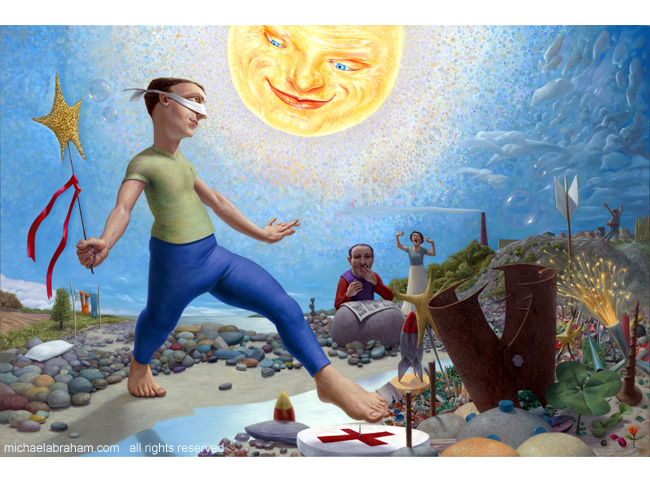
“As an artist I endeavor to understand and accept human nature in all of its complex majesty. Painting allows me to share the processing of experience. I enjoy the storytelling aspect of art. Each painting shares part of a larger journey, starting from a naive and hopeful worldview to one that holds a greater understanding of our vulnerability and lost innocence. My art conveys awareness to the struggle for survival in a competitive world, but is also an expressionistic portrayal of awe and wonder.
Motivation to create an image can come from any number of things, including art, literature, the media, politics, philosophy, religious studies, psychology and real life involvement. Being a non-linear thinker, with a variety of personal circumstances and experiences, influences and mess-ups to draw from really help in the creative process! There are so many things to ponder and wrap one’s head around… Art is a reflection of life: ever changing, growing and dying, serious, funny, and paradoxical.
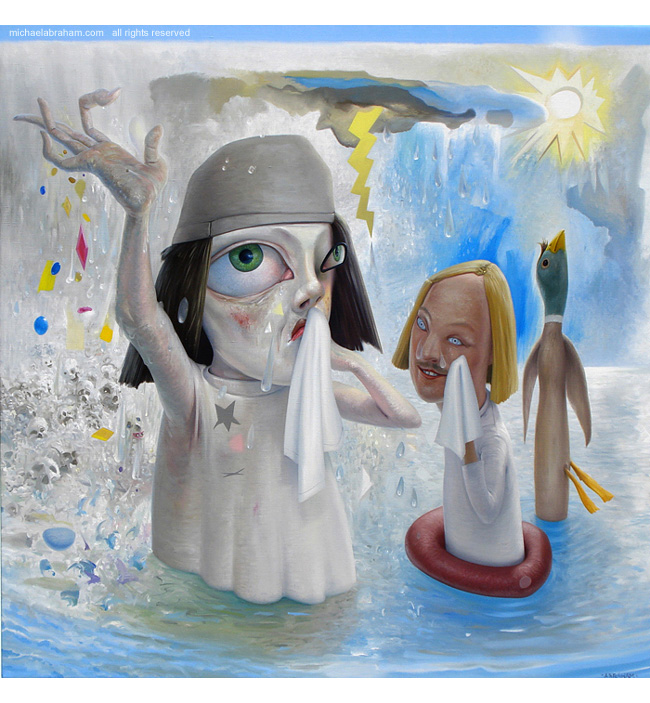
“The famous French Canadian painter Riopelle said that painting is a disease, and that once you catch it you have it for life. I caught it. I have been living breathing and eating art for many years. Being in the process of making art is very much feeling one’s aliveness, insignificance, bravado, greatness, feebleness. I am a designer, a colourist, and a composer of ideas. I am not bound by realism. I like to give myself the freedom to play and explore as the process permits. I am intrigued by both the narrative and abstract nature of painting. Artists I admire include Breughel, Picasso, Ingres, Fra Angelico, and Stanley Spencer, who are all formal composers in the visual realm. In my attempts at illustrating pure experiential encapsulation, I hope that my work offers a confirming view of life. Fleeting time and marks on a page, my art is my sorrow, my hope, my prayer and my joy.”
Artwork and text generously permitted to be republished on this blog by the artist himself. Please visit his site to see more of his amazing work. Surely artists as inspiring as he must replace the original Group of Seven?
Tags: Art, Canada, Painting, Vancouver
Posted in Uncategorized | No Comments »
Wednesday, 2 September 2009
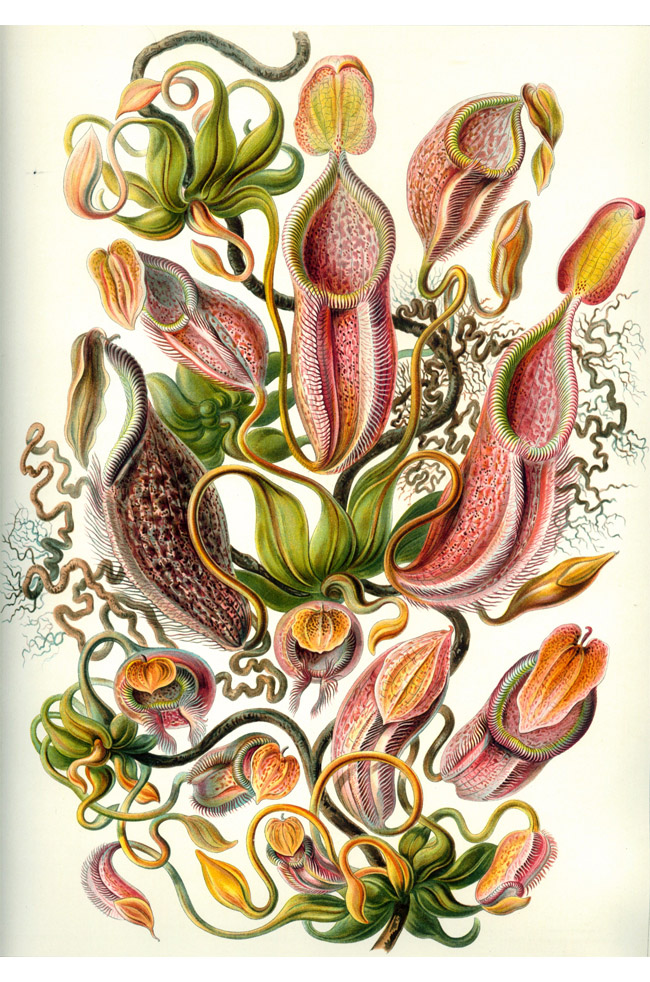
I have a love-hate relationship with Biology. It was a compulsory course, and in my young frivolous days, I did not particularly care to understand how things in nature worked. The only saving grace in my twice-a-week misery were the beautiful biological illustrations. Who would have thought such fascinatingly detailed sketches would appear in those endless exercises of toad dissections, pickled organs and the occasional fainting spell? I never did figure out who the illustrators were, though I always wondered how anyone interested in something as vomit-inducing as innards or microscopic and onion cells could produce such delicate sketches. Well, today I came across just someone who does that - German biologist Ernst Haeckel.

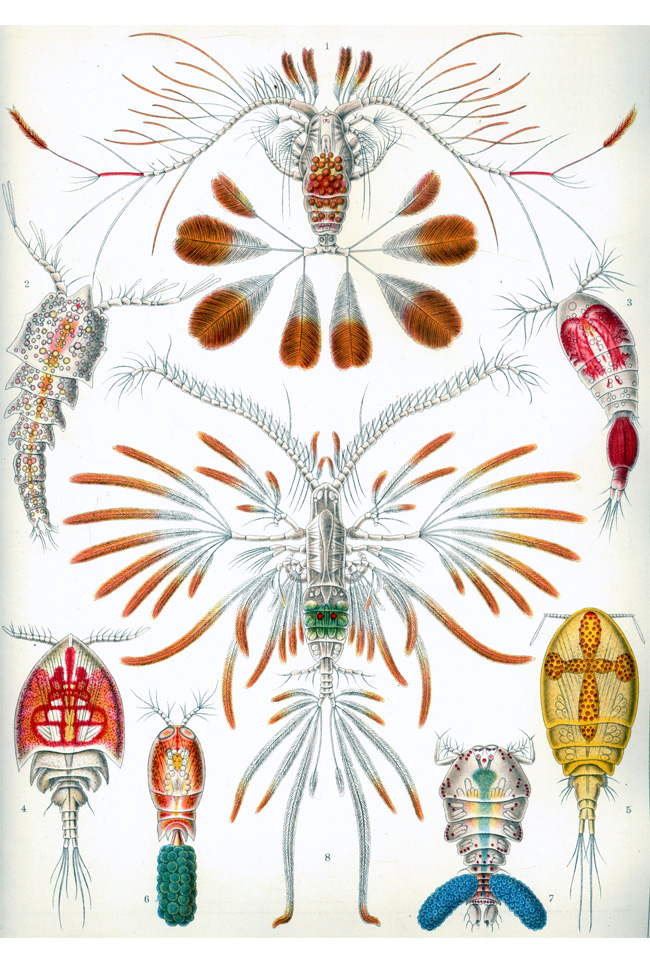
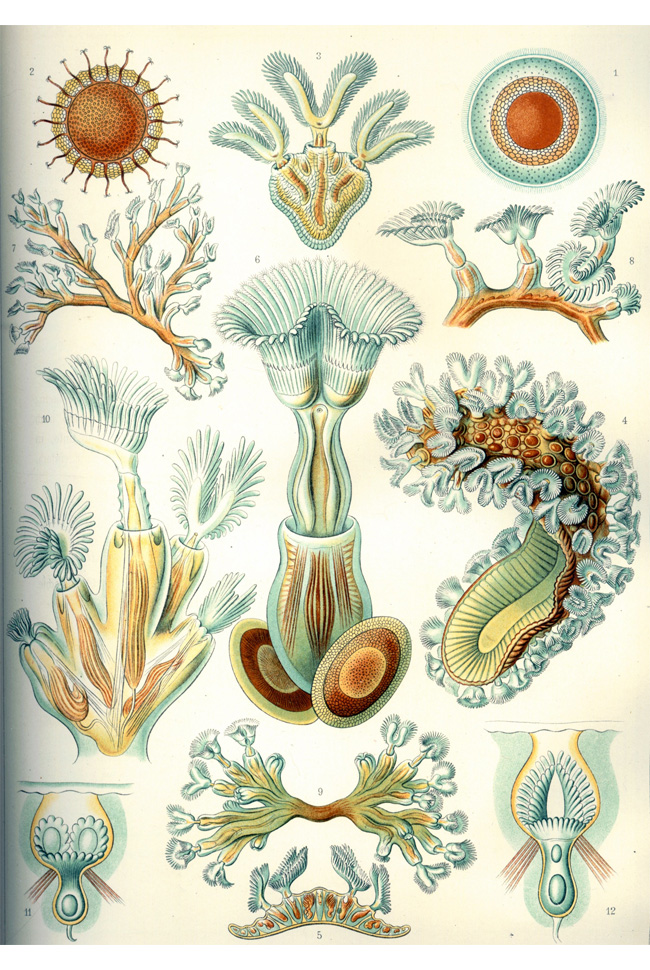
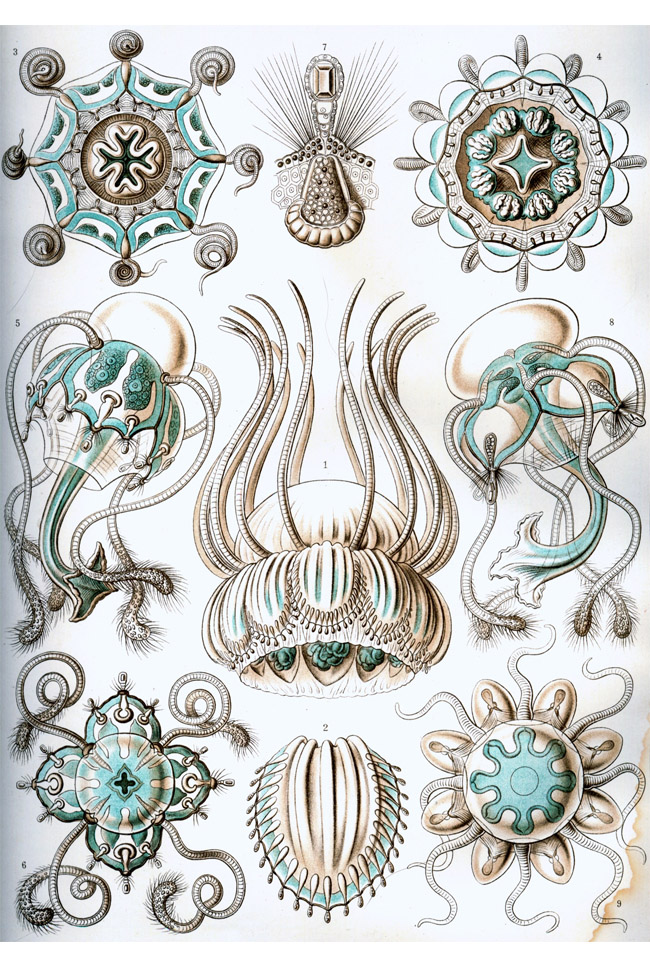
Posted in Uncategorized | 6 Comments »
Tuesday, 1 September 2009
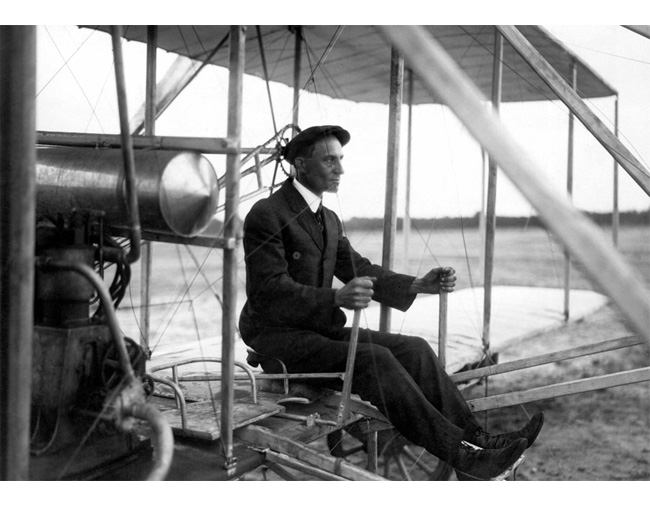
Inventor Wilbur Wright on his airplane during a demonstration at Camp d’Auvours on this day, in 1908. Wilbur made a series of technically challenging flights including figure-eights, demonstrating his skills as a pilot and the capability of his flying machine, which far surpassed those of all other pilot pioneers.
Tags: History, Tribute
Posted in Uncategorized | No Comments »
Monday, 31 August 2009

Again and again, the focus of Slawomir Elsner’s work is “catastrophe’s dazzling beauty”. This series, titled “Windows on the World”, first draws you in with its furious light play and its sensual beauty, and conceptual aspects appear again on the aesthetic master plan in these large-sized coloured pencil drawings. The drawings are based on photos that Elsner took from and in the then still standing World Trade Center in New York in 2001. To be more exact, they were taken from the windows of the “Windows on the World” Club and of the club’s interior on the building’s 107th floor. Meticulously, the artist has transferred the photos with his coloured pencils and their shimmering colours onto a 1.68m x 1.10m format.
Elsner’s dashed application of colour seemingly uses the photos as templates slavishly. He even copies the camera’s faults such as accidental blurs. The large size strengthens the almost garish pictures’ effect. The result is a nearly pictorial impression. Thus, different gestures entwine each other – those of the tourist’s “snap shot”, the documentary drawing and pictorial impressions – and nearly dissolve their contrasts in this infusion.
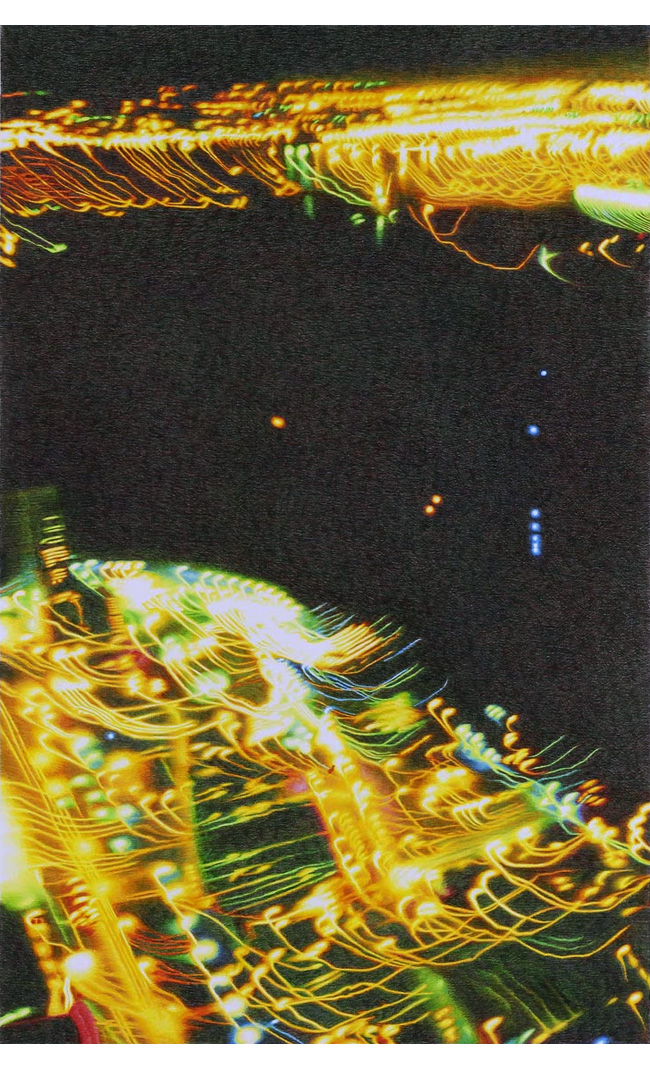
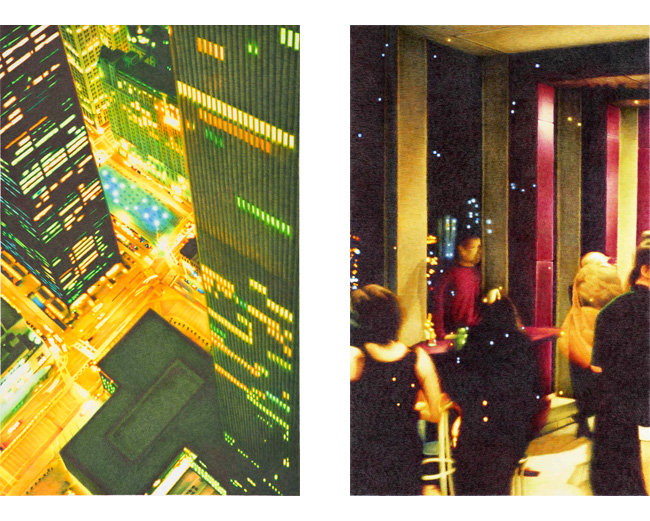
Text adapted from press release, obtained from Johnen Galerie Berlin.
Tags: Art
Posted in Uncategorized | No Comments »
Friday, 28 August 2009
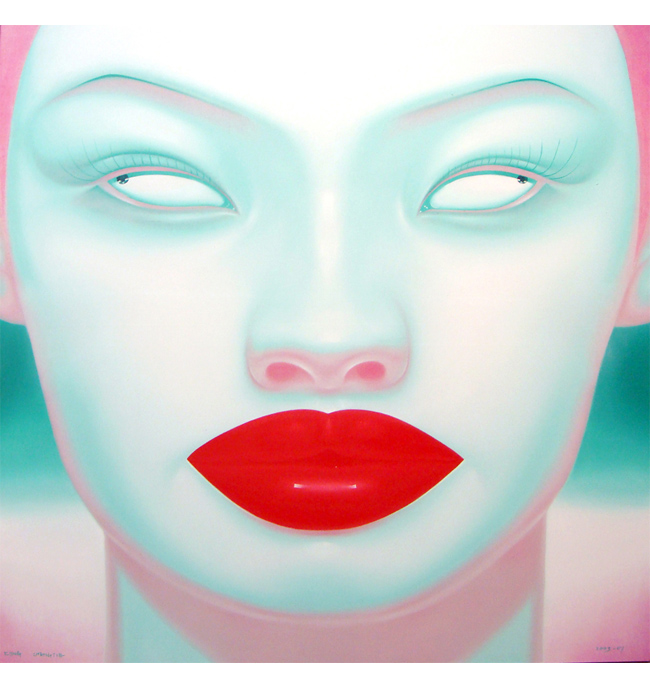
Feng Zhengjie paints striking contemporary women. With their coloured hair, richly hued clothes and luscious, expressive lips, the women appear irresistibly dazzling. And yet, the wandering expressions in their eyes render them elusive and enigmatic. Reminiscent of Warhol’s screen printed celebrities, Feng’s paintings reflect a vision of futuristic pop. His generic portraits of women are influenced by promotional imagery: their exotic colours, electrified auras, and wind machine hair exude the glamour aesthetic of commodified desire. Feng appropriates these staples of western kitsch as a readymade lingo for a duplicity of ideology. His work is often discussed as capitalist critique, his empty eyed models posing as frivolous and vacant signifiers. Neither western nor Chinese in appearance, Feng’s femmes fatales are a super-hybrid of commercial beauty, a science fiction product of globalisation.
Painted in massive scale, Feng’s canvases replicate the billboards from which they were inspired. Without text, or accompanying products, Feng’s paintings streamline their hard-sell ethos. Removing all distraction, he exposes the essence of temptation, magnifying the sex appeal of fantasy lifestyle and its gulf of intangibility. Transposing these disposable sentiments through his highly refined painting technique, Feng glorifies the allure of advertising as epic, enduring, and numbingly empty.
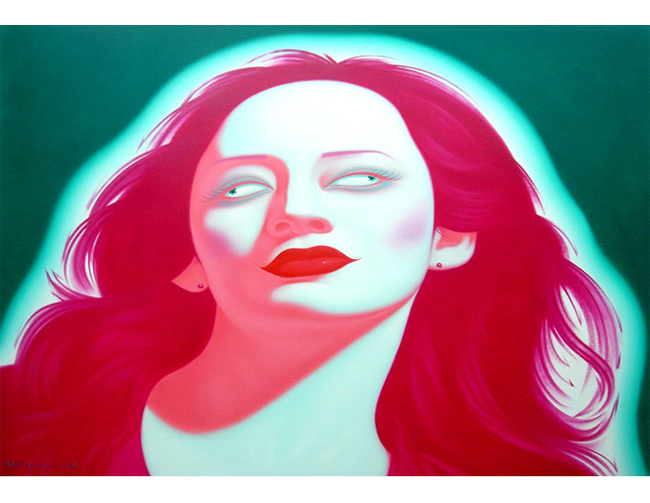
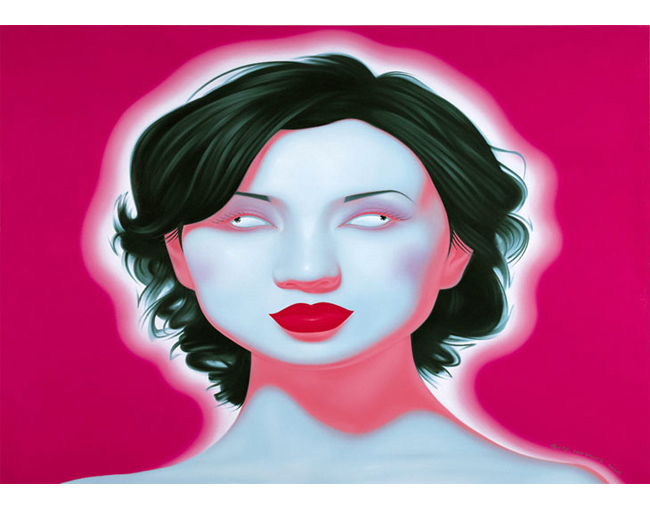

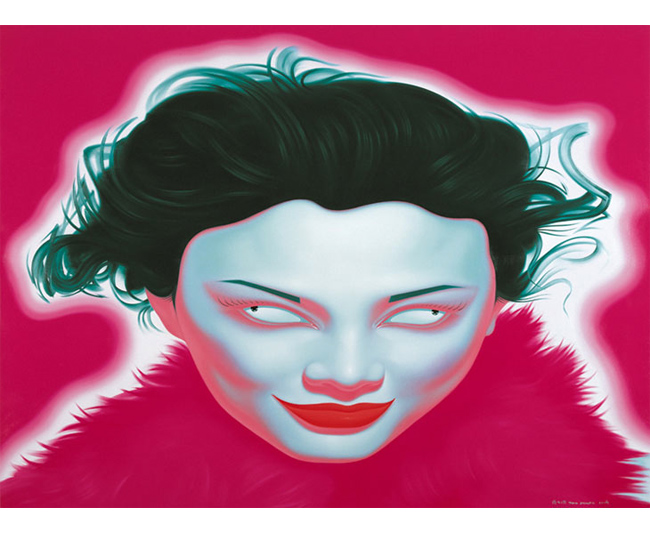
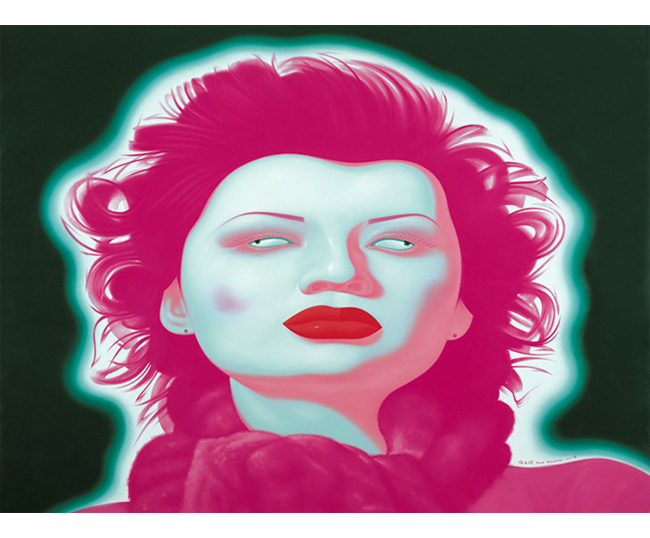
Text sourced from Saatchi Gallery.
Tags: Art, China, Painting
Posted in Uncategorized | 1 Comment »

















































